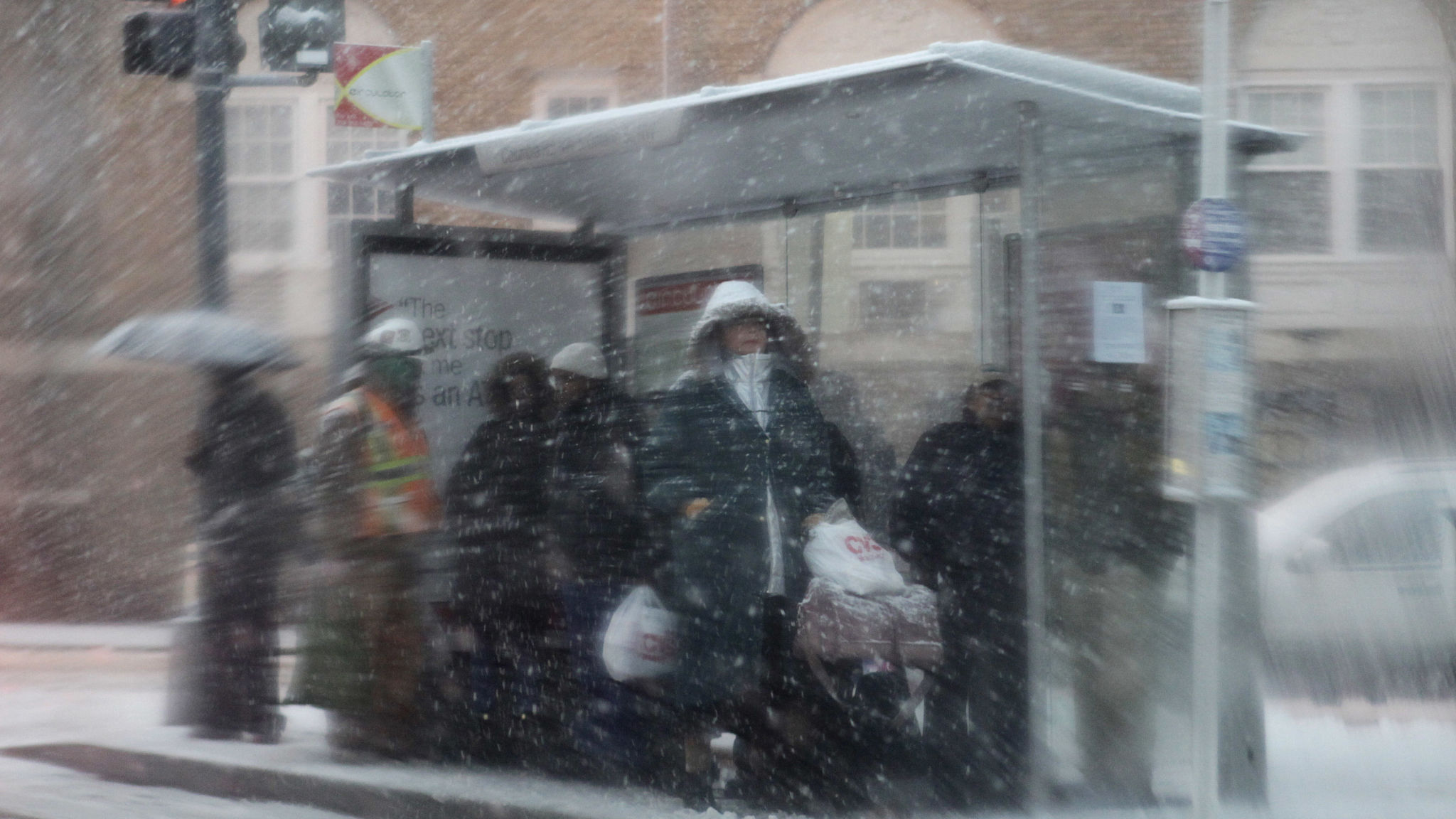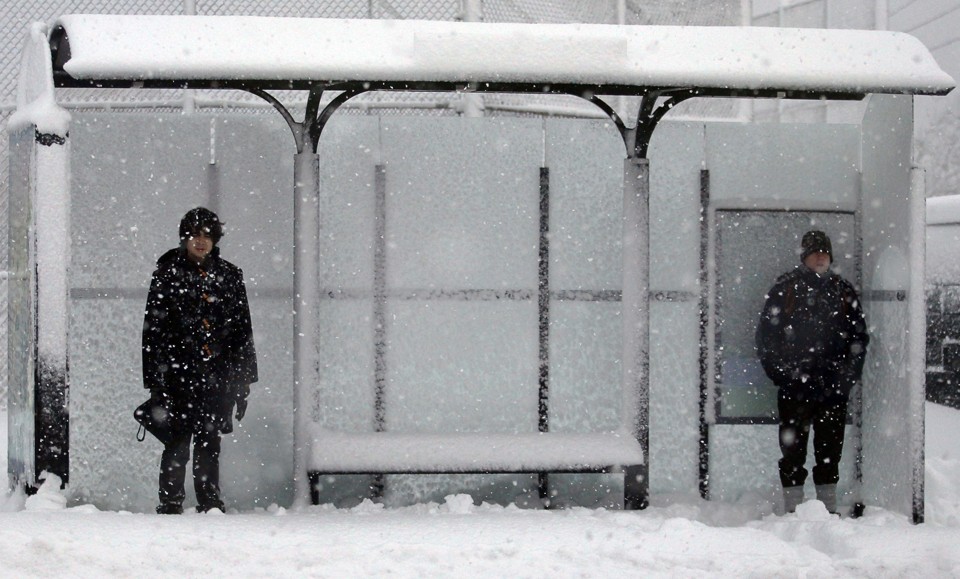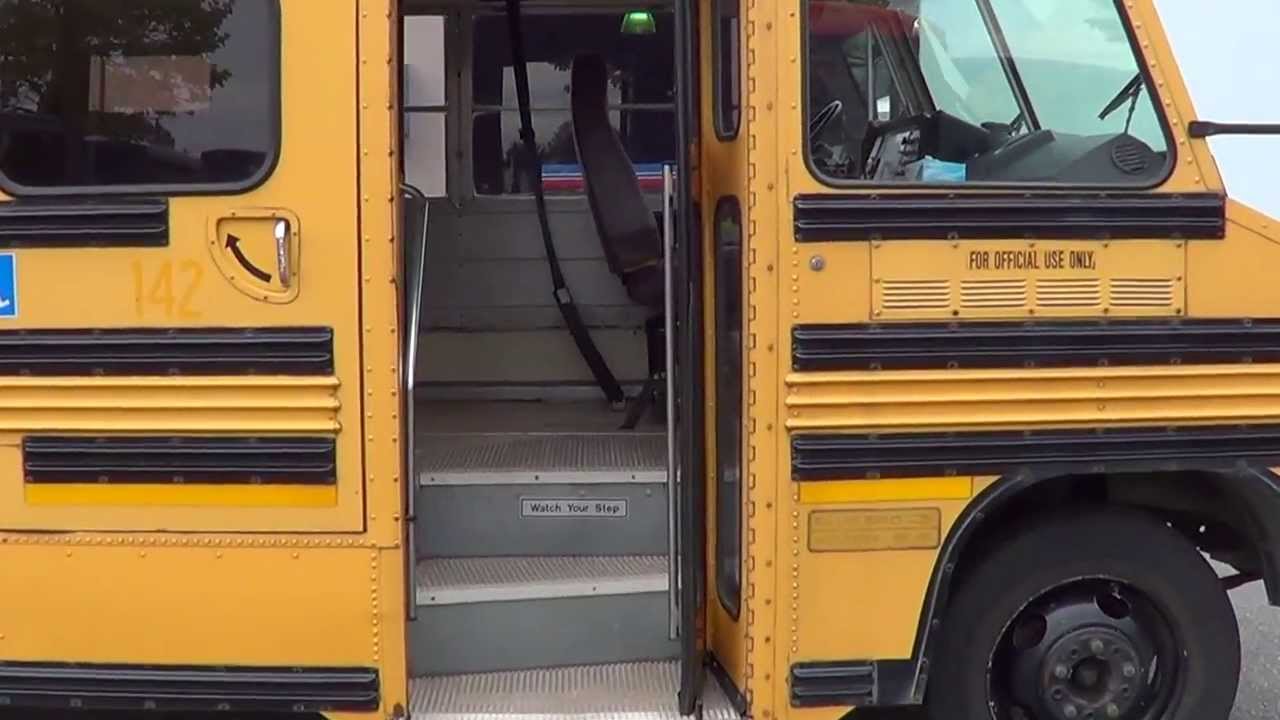Transportation shouldn’t be a barrier to health care
Transportation issues shouldn’t prevent anyone from getting to or from a doctor’s appointment. But they do just that for an estimated 3.6 million Americans. Some of these individuals don’t have cars or access to public transportation. Others can’t afford taxis or Ubers.

Evening commuters wait for the bus to come at rush hour – heavy snow storm in Washington, Wednesday Jan. 26, 2011. AP Photo Jacquelyn Martin
By Imran Cronk, STAT September 2, 2016
Take the case of Greg, who lives in Fairfax, Va. (His name has been changed to protect his identity; this story is used with his permission.) Three years ago, at age 64, he found himself without a job and living in a friend’s basement. Diagnosed with diabetes, Greg struggled to keep up with his medications. Without a car or access to good public transportation, he couldn’t see his doctor often enough for the exams, test, and self-management education he needed.
He eventually needed to be admitted to the emergency room, where doctors found that he had developed peripheral neuropathy, a complication of diabetes that can occur when the disease is not properly managed. Two of Greg’s toes had to be amputated. That hospitalization and its awful consequences might have been avoided with a few low-cost rides to the doctor before his problems worsened.
This simple issue — not being able to find or afford a ride — turns into an enormous hidden costs for patients, caregivers, providers, insurers, and taxpayers alike. Missed appointments and the resulting delays in care cost our health system an extra $150 billion each year.
In theory, help is available. Medicaid programs spend $3 billion nationwide a year on something called non-emergency medical transportation (NEMT). It is intended to help low-income and disabled individuals get to and from their appointments. Medicaid contracts with different brokers from state to state, sometimes county to county, and these brokers subcontract rides to hundreds of local transportation companies.
But the NEMT system is broken. Some of the local van fleets and cab services aren’t equipped with modern technology such as GPS tracking or automated dispatch. Others provide shoddy service that has been described as “nightmarish.” What’s more, $3 billion a year isn’t nearly enough to provide rides to all of the Medicaid beneficiaries who need them.
As the cofounder of an organization that aims to address these transportation barriers to care, I see or hear about how these problems affect real people each and every day. In Detroit, a contractor routinely shut off its phone lines at 5 p.m., leaving sick and elderly people — including a 79-year-old cancer patient — stranded at appointments without rides back home. In Connecticut, a contractor was hit with civil rights violation complaints for transporting immune-compromised children with cancer in the same van with other sick passengers.

You can provide the best care in the world, but it doesn’t matter if the patient has no way to get to it. The Atlantic, Brian Snyder / Reuters
A company in Milwaukee received thousands of complaints about late or no-show rides for cancer, dialysis, and other medical appointments. In a New Jersey survey of NEMT users, more than half of the respondents said they had “missed appointments, feared for their safety during transit, or suffered harassment, disrespect, or other indignities at the hands of the drivers.”
Even though the system is broken at many levels and there are no easy fixes, we can’t turn our backs on the problem. Earlier this summer, the National Patient Advocate Foundation organized a policy consortium entitled Transportation: The Road to Nowhere for Too Many Patients. It convened patient navigators, policy makers, and innovators from across the nation to take a hard look at the issue and brainstorm solutions.
One key take-home message was that improving and expanding NEMT programs, possibly with public-private partnerships between state Medicaid agencies and emerging technology platforms, such as Uber and Lyft, would be good for the nation’s health and our health care spending.

Investing in a streamlined, modernized NEMT program makes sense. An evaluation of Florida’s NEMT program found that the state would save $11.08 for every dollar invested if just 1 of every 100 subsidized rides prevented an individual from being hospitalized due to missed or delayed doctors’ appointments. If those savings can be achieved in a fragmented program, imagine what would happen if the program actually worked well.
My organization, Ride Health, isn’t waiting to find out. Instead, we are focused on using widely available on-demand ride technology to help connect the dots between patients, providers, insurers, and drivers. We aren’t alone — health systems, transportation companies and insurers across the country are developing innovative new models and partnerships to address the challenge.
It will take a village to help millions of patients, some of them in hard-to-reach locations, overcome the transportation barriers they face today. We hope that these efforts will make it easier for vulnerable and chronically ill patients to reach care; enable providers who are paid based on their patients’ outcomes to address this social determinant of health; lower the cost of care for insurers; and benefit drivers who tend to see fewer requests for rides during the day.
All Americans should have access to timely care. Lack of transportation shouldn’t be a barrier, especially for those who need it most.
| Imran Cronk is a cofounder of Ride Health, an organization that helps health care providers coordinate solutions for patients who face transportation barriers. Twitter @icron |
Source STAT
Also see
It’s time to incorporate social needs into patient care STAT
Creative Ways to Make that Healthcare Appointment FAST LANE
The Transportation Barrier The Atlantic
Stranded: How America’s Failing Public Transportation Increases Inequality The Atlantic
